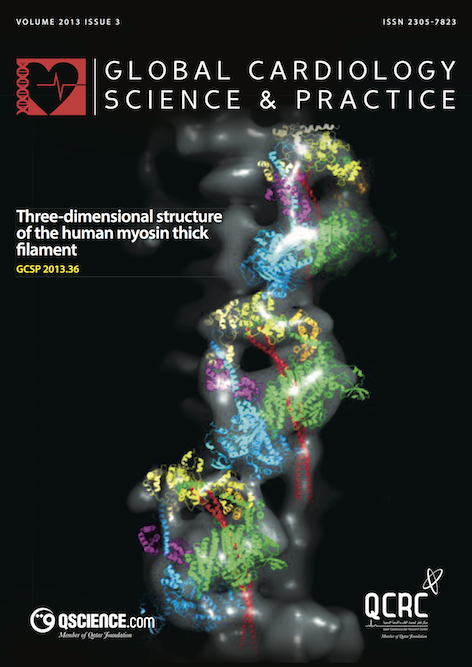Regulation of intracellular Na+ in health and disease: pathophysiological mechanisms and implications for treatment
Abstract
Transmembrane sodium (Na+) fluxes and intracellular sodium homeostasis are central players in the physiology of the cardiac myocyte, since they are crucial for both cell excitability and for the regulation of the intracellular calcium concentration. Furthermore, Na+fluxes across the membrane of mitochondria affect the concentration of protons and calcium in the matrix, regulating mitochondrial function. In this review we first analyze the main molecular determinants of sodium fluxes across the sarcolemma and the mitochondrial membrane and describe their role in the physiology of the healthy myocyte. In particular we focus on the interplay between intracellular Ca2+and Na+. A large part of the review is dedicated to discuss the changes of Na+fluxes and intracellular Na+concentration([Na+]i) occurring in cardiac disease; we specifically focus on heart failure and hypertrophic cardiomyopathy, where increased intracellular [Na+]iis an established determinant of myocardial dysfunction. We review experimental evidence attributing the increase of [Na+]ito either decreased Na+efflux (e.g. via the Na+/K+pump) or increased Na+influx into the myocyte (e.g. via Na+channels). In particular, we focus on the role of the “late sodium current” (INaL), a sustained component of the fast Na+current of cardiac myocytes, which is abnormally enhanced in cardiac diseases and contributes to both electrical and contractile dysfunction. We analyze the pathophysiological role of INaLenhancement in heart failure and hypertrophic cardiomyopathy and the consequences of its pharmacological modulation, highlighting the clinical implications.
The central role of Na+fluxes and intracellular Na+physiology and pathophysiology of cardiac myocytes has been highlighted by a large number of recent works. The possibility of modulating Na+inward fluxes and [Na+]iwith specific INaLinhibitors, such as ranolazine, has made Na+a novel suitable target for cardiac therapy, potentially capable of addressing arrhythmogenesis and diastolic dysfunction in severe conditions such as heart failure and hypertrophic cardiomyopathy.
Downloads
Published
Issue
Section
License
This is an open access article distributed under the terms of the Creative Commons Attribution license CC BY 4.0, which permits unrestricted use, distribution and reproduction in any medium, provided the original work is properly cited.


